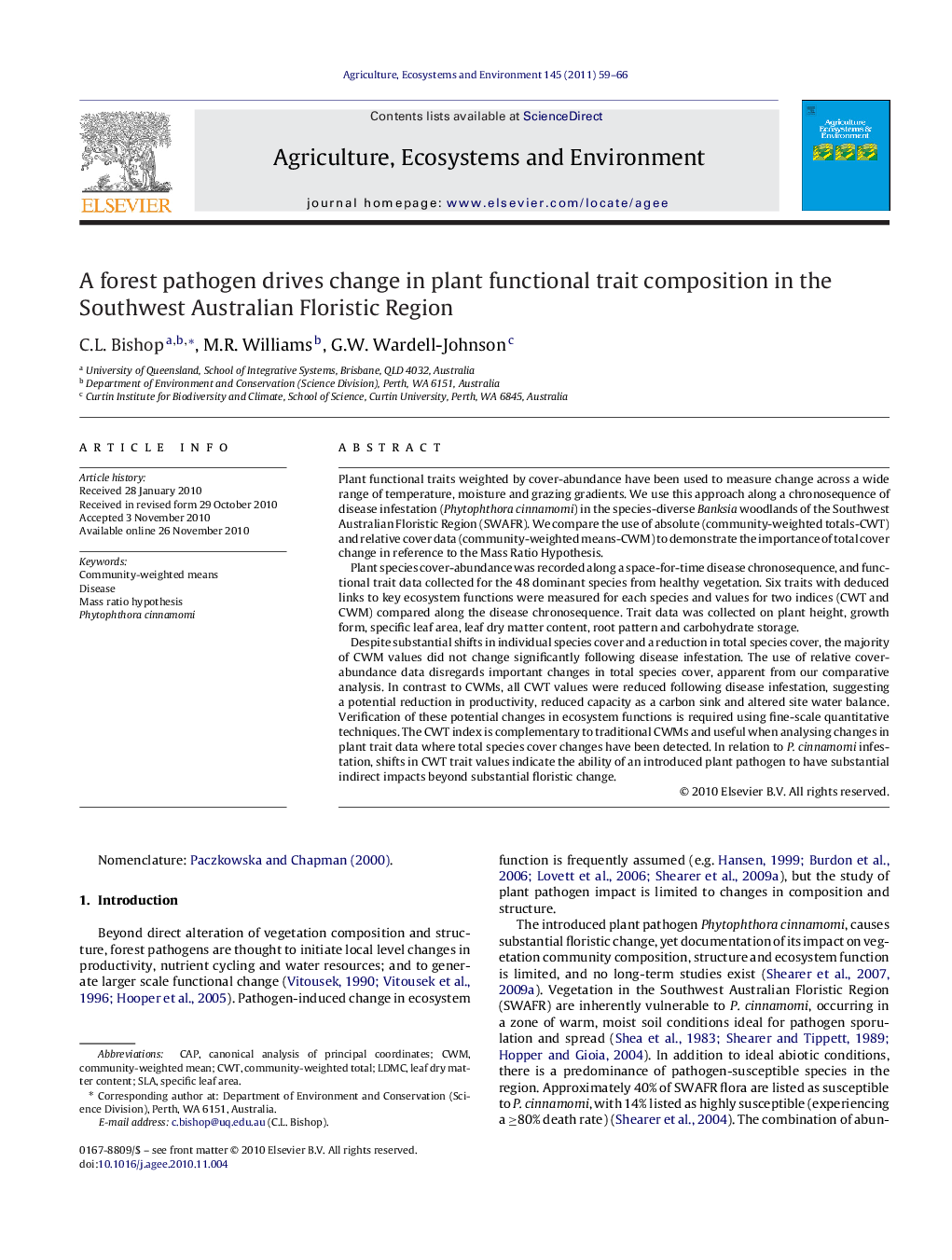| کد مقاله | کد نشریه | سال انتشار | مقاله انگلیسی | نسخه تمام متن |
|---|---|---|---|---|
| 2414587 | 1103922 | 2011 | 8 صفحه PDF | دانلود رایگان |

Plant functional traits weighted by cover-abundance have been used to measure change across a wide range of temperature, moisture and grazing gradients. We use this approach along a chronosequence of disease infestation (Phytophthora cinnamomi) in the species-diverse Banksia woodlands of the Southwest Australian Floristic Region (SWAFR). We compare the use of absolute (community-weighted totals-CWT) and relative cover data (community-weighted means-CWM) to demonstrate the importance of total cover change in reference to the Mass Ratio Hypothesis.Plant species cover-abundance was recorded along a space-for-time disease chronosequence, and functional trait data collected for the 48 dominant species from healthy vegetation. Six traits with deduced links to key ecosystem functions were measured for each species and values for two indices (CWT and CWM) compared along the disease chronosequence. Trait data was collected on plant height, growth form, specific leaf area, leaf dry matter content, root pattern and carbohydrate storage.Despite substantial shifts in individual species cover and a reduction in total species cover, the majority of CWM values did not change significantly following disease infestation. The use of relative cover-abundance data disregards important changes in total species cover, apparent from our comparative analysis. In contrast to CWMs, all CWT values were reduced following disease infestation, suggesting a potential reduction in productivity, reduced capacity as a carbon sink and altered site water balance. Verification of these potential changes in ecosystem functions is required using fine-scale quantitative techniques. The CWT index is complementary to traditional CWMs and useful when analysing changes in plant trait data where total species cover changes have been detected. In relation to P. cinnamomi infestation, shifts in CWT trait values indicate the ability of an introduced plant pathogen to have substantial indirect impacts beyond substantial floristic change.
Research highlights▶ Introduced forest pathogen reduced total vegetation cover by 40%. ▶ Trait composition substantially altered indicating potential shift in key ecosystem functions. ▶ Considerable indirect impacts beyond floristic change.
Journal: Agriculture, Ecosystems & Environment - Volume 145, Issue 1, December 2011, Pages 59–66